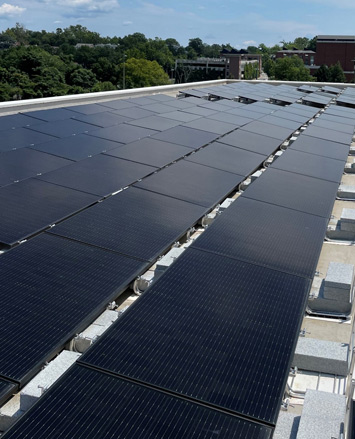Renewable Energy Tracker
School of Data Science
The University of Virginia School of Data Science — the first of its kind in the nation — is guided by common goals: to further discovery, share knowledge, and make a positive impact on society through collaborative, open, and responsible data science research and education.
The roof of SDS building houses 160 modules each Hanwha/Q-Cells 365W, bringing the system size to 58.4kW. These modules take up about 4,317 sqft of roof area and are expected to generate 76,569 kWh/year which is equivalent to 54 metric tons of CO2 reduction per year. The PV system came online in 2024 at the same time as building occupancy.

Current solar production
Total solar production since April 12, 2024
Production
Total production: kWh
Average production: kW
After 6 hours at peak capacity, this solar installation is estimated to generate 348 kWh and save 137 kg of greenhouse gas emissions. This is equivalent to the carbon dioxide emissions from:
- 349 miles driven by an average passenger vehicle
- 15.4 gallons of gasoline consumed
- 152 pounds of coal burned to generate energy
On a daily basis, the average US residential utility customer consumes approximately 30 kWh of electricity (emitting approximately 45 kg of greenhouse gas emissions), drives 37 miles, and uses approximately 4.5 gallons of gasoline and 41 lbs of coal.
1 kWh equals
Watching a 50" LED TV (50 watts) for 20 hours
Environmental Savings from Total Solar Production to Date
metric tons of CO2 avoided
gallons of water saved
barrels of crude oil not used